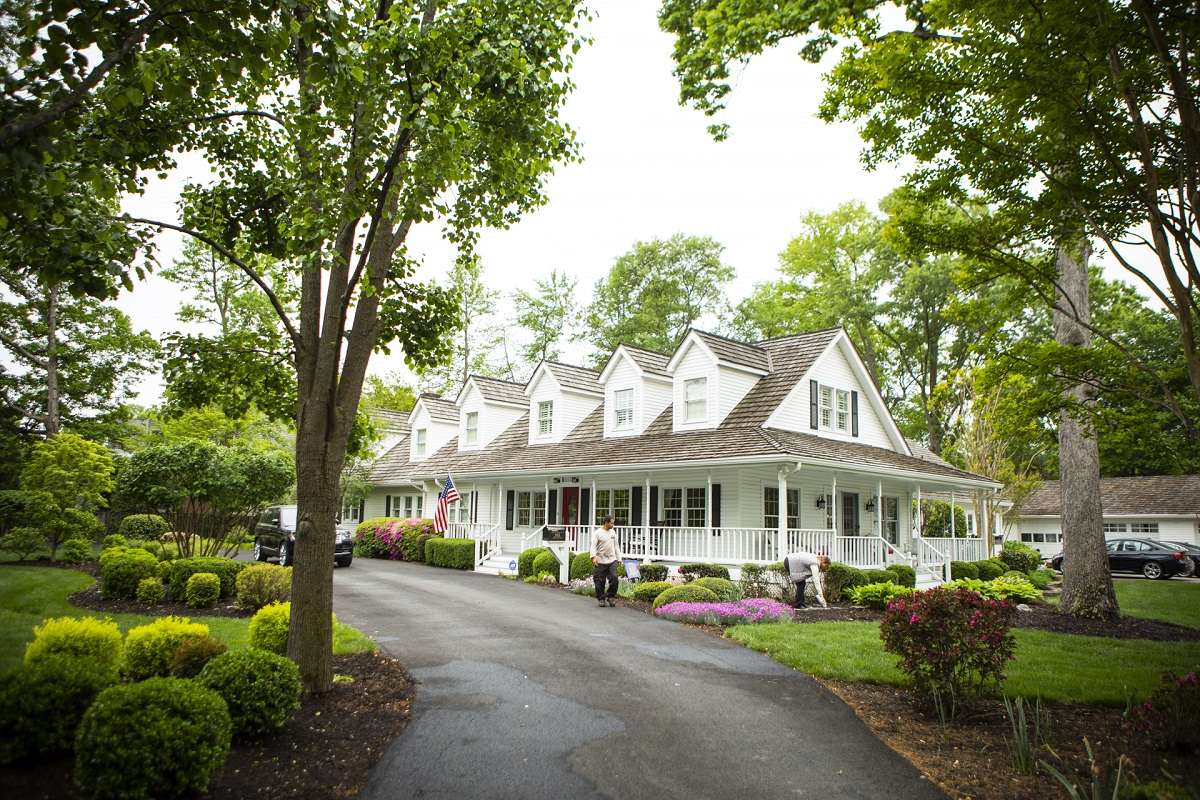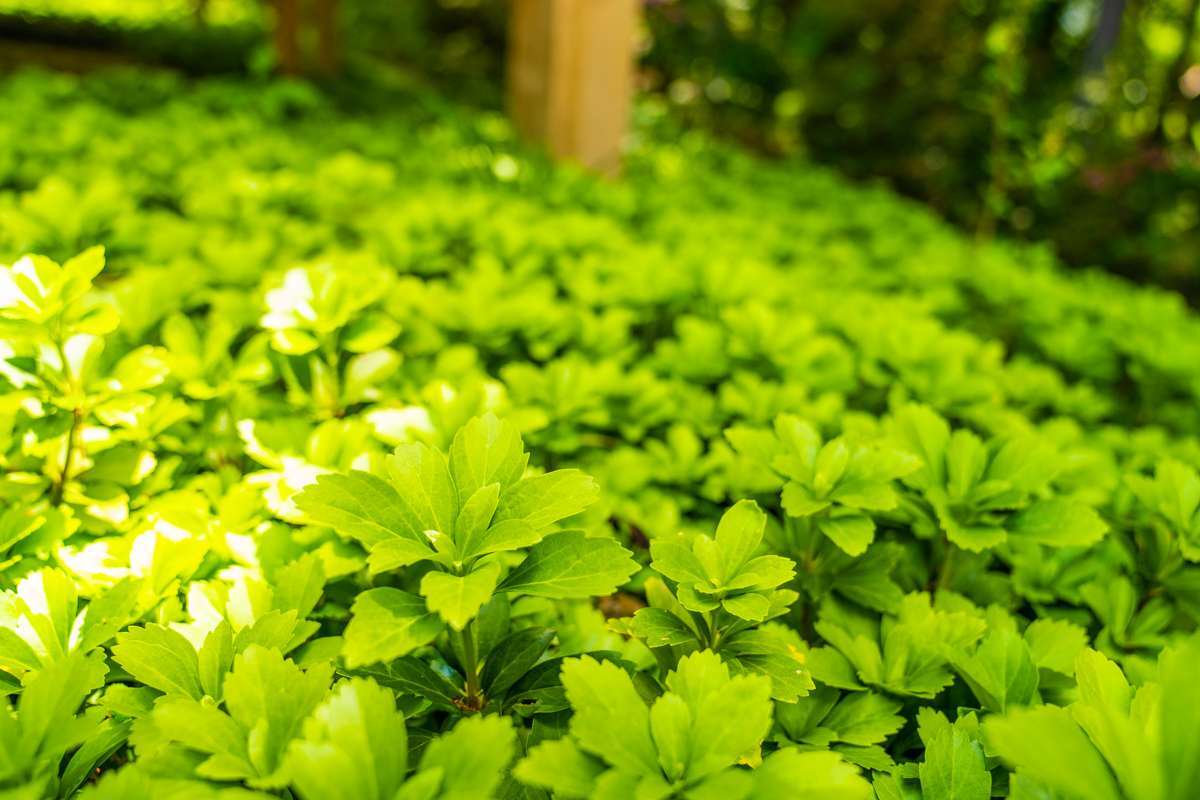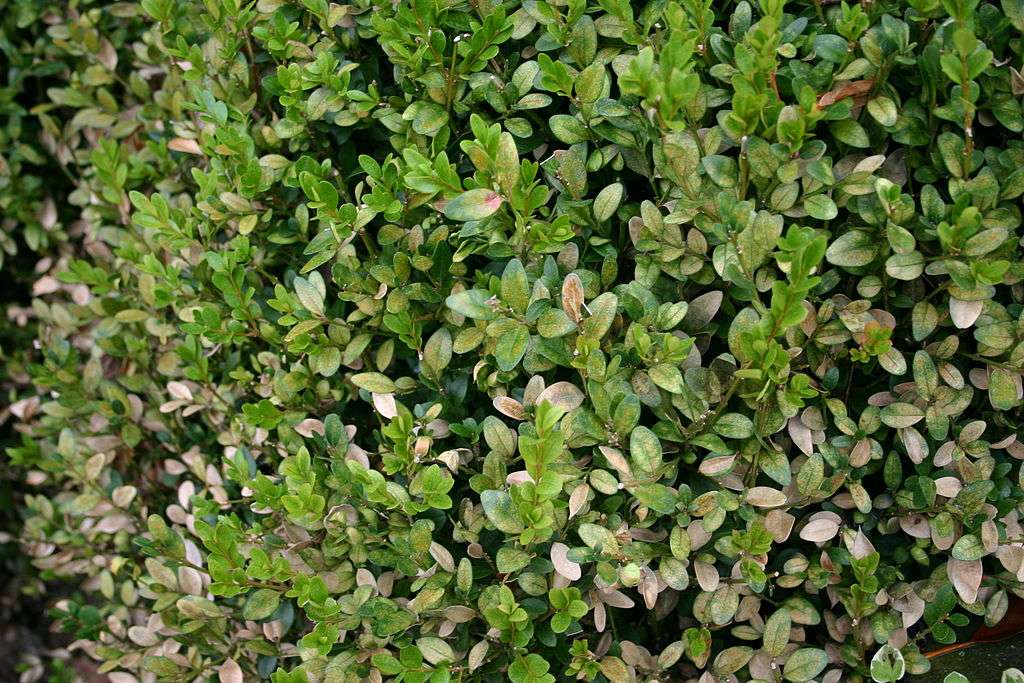


Groundcover plants can be a versatile addition to your landscape in areas where you might struggle to grow other plants. Our Landscape Designers say that groundcovers can add color, texture, and continuity to a landscape design.
Groundcovers often make excellent choices for hillsides and slopes where erosion might make it difficult for other plant types to grow. It can also work in areas where grass or other plants struggle to grow as many groundcovers are hardy and resilient.

In this article, we’ll talk about some of the best groundcovers to consider for your Northern Virginia property. We’ll also address some of the most frequently asked questions about using groundcovers around your home.
Choosing native plants is always a smart choice as these plants are well-adapted to the region.
Native plants are those that have been historically found and grown in the region and as a result, tend to do well with minimal care. Many of these native species are found growing on their own in the wild without any care.
These types of plants tend to be drought-tolerant, which can be incredibly helpful during the summer months when Mother Nature isn’t supplying ample rain.
Creeping Phlox and Woodland Phlox are two examples of native groundcover plants in Virginia that can perform well in the landscape.
The toughest groundcover plants would be those that can withstand a variety of conditions including even minimal water and poor soil. Often, native plants do make good choices for tough groundcovers.
That being said, often “tough” groundcovers end up also being invasive species. In general, groundcover plants can already grow and spread quite rapidly (which is one reason that people do love them as a “fill-in” for bare areas or hills).
But some groundcovers spread so fast they can be invasive, spreading into areas where you don’t want them.

English Ivy is a prime example of this. English Ivy can climb up houses, trees, and spread into your neighbors’ yards. It also tends to be a hotspot for mosquitoes. While we know that some homeowners really like this plant, we strongly advise against it.
The toughest groundcover plant that we WOULD recommend is Creeping Thyme. It’s hardy and requires minimal maintenance. It’s highly drought tolerant and deer even tend to avoid it.
There has been a new trend among homeowners seeking “steppable” groundcover plants for their properties. Often, this is tied to the idea of replacing turf areas with groundcover. But this decision should be made cautiously. There are a lot of benefits to turf that simply can’t be replaced with groundcover plants.
Grass is best if you plan to use your lawn for activities like picnics, yard games, or sports. Grass is also typically best for pets.
People are also uncomfortable walking barefoot through groundcover as it's not uncommon for them to have a variety of pests hiding inside.

That being said, if you don’t have young children or pets and you don’t use your lawn often, you might be interested in lower-maintenance groundcover options to fill in some space with greenery. We know that lawns can require upkeep, and sometimes homeowners want something more low-maintenance.
But even the toughest groundcover plants aren’t necessarily well-suited to sustain heavy or repeated foot traffic. However, for light foot traffic or for use between stepping stones, Creeping Thyme and Creeping Jenny can make excellent choices. Dwarf Mondo Grass also performs well.
Creeping Thyme is known to be easy to grow. This is due to its low-maintenance qualities. It can survive on minimal watering and overall care. It also spreads relatively quickly, helping to fill in bare areas.
Keep in mind that, in general, most groundcover will take some time to establish. So, if filling in a spot quickly is important, you’ll want to choose a fast-growing option.

Other considerations when growing groundcover include necessary sunlight conditions and where they’re being installed on the property (including whether it is flat ground or a hillside).
Yes, many groundcover plants perform well in full sun. As with any plant that you are installing, you want to understand the conditions in which it will perform best fully.
Creeping Thyme and Creeping Phlox are two that are optimally suited to sunny conditions.
These days, there are an increasing number of groundcover options available, so it’s easy to find one that is best-suited to the conditions of your specific property and its growing conditions.
Conversely, many types of groundcover can also perform well in shade. Hostas and Ferns are two examples of plants that can be used as ground cover and will perform well in shade.
Whether you are choosing groundcover plants, or something else, you want to make sure they are properly installed. This starts with preparing the site for installation. To install groundcover, ensure that any invasive weeds are first removed from the site.
In addition to preparing the land properly, it’s also important to consider other factors specific to your property. Think of it as your property’s “micro-climate.” There will be certain areas of your property that receive more shade and others that receive more sunlight.

Hardy plants still need to be installed in an area of your property where they will receive what they need.
There may also be areas that receive more wind or more water (particularly if you have any drainage considerations).
There’s a saying in our industry: 'Right Plant, Right Place.' It means that you want to ensure you are installing plant material in an area of your property where it will perform optimally.
At Kingstowne Lawn & Landscape, we take all of this seriously. We understand that when you purchase plant material, you expect it to last for many years. A significant part of protecting that investment is ensuring that your plants are installed properly — and then cared for correctly, too.
At Kingstowne Lawn & Landscape, we not only handle plant installations but also their ongoing maintenance. In addition to offering valuable advice, we can also offer our clients a Plant Health Care program, Pruning Plans, and Mulching Plans, which will set them up for success.
This all boils down to helping you protect your investment. When you invest in professional landscaping services in Alexandria, Arlington, and Springfield, VA, you set your landscape up for success.
If you’d like to discuss a landscape installation, plant health care, pruning, or mulching for your landscape, request a quote, get your customized plan, and relax knowing that your plants are in good hands.

Since its founding, Krisjan has led Kingstowne Lawn & Landscape with a straightforward philosophy: treat every customer like the “only” customer. His passionate pursuit of excellent customer service has led to 28 successful years and a thriving company with over 85 employees. Since 1997, Kingstowne has helped thousands of homeowners in the Alexandria, Arlington, and Springfield, VA area get what they want - a worry-free property they can be proud of.




If You're Looking For a Sign, This is It.
Seriously, that lawn isn't getting any better on it's own. Mrs. Jones just called the HOA on you